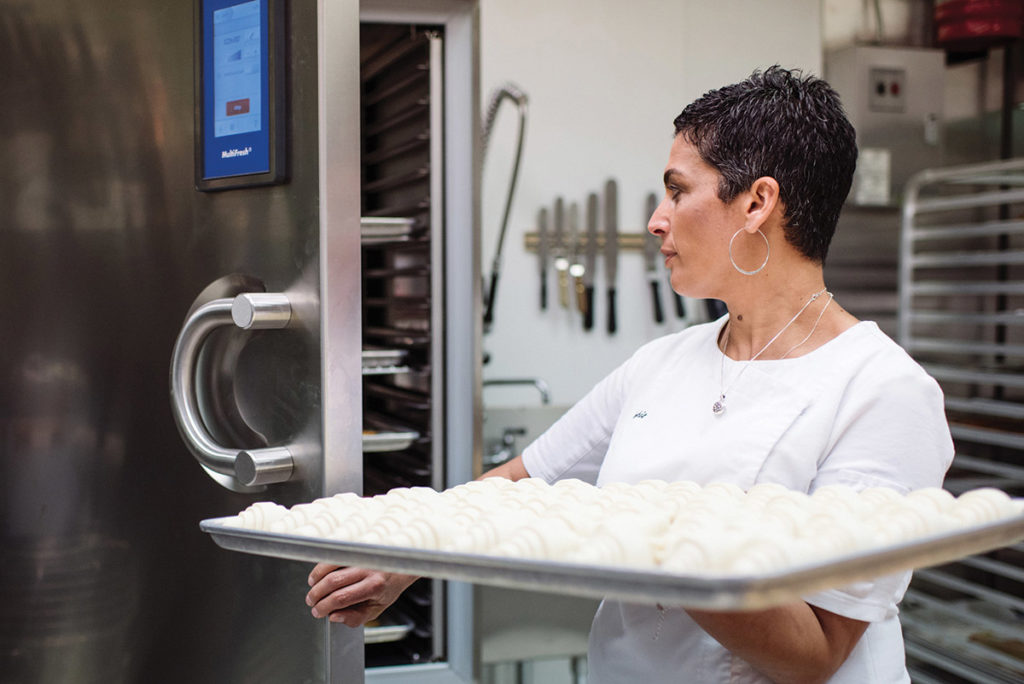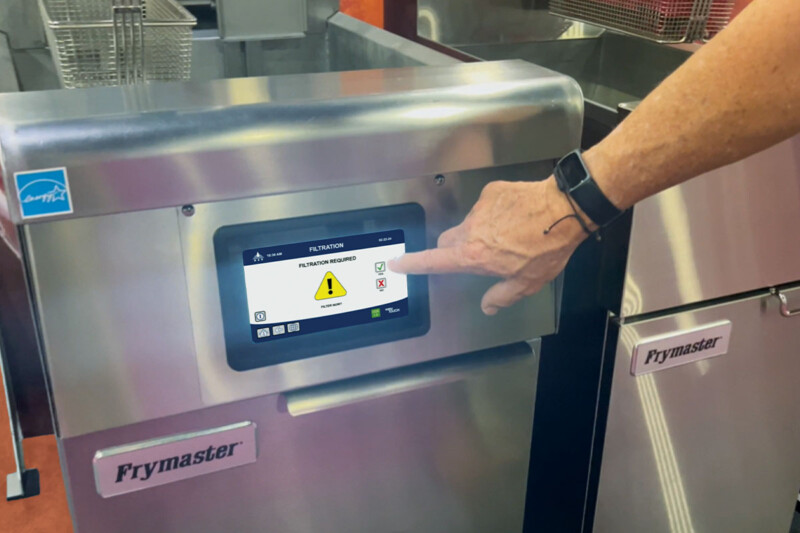How To Care For Your Blast Chiller

Blast chillers are essential to foodservice operations. By quickly chilling cooked food, they increase food safety by reducing the opportunity for harmful bacteria to grow in the HACCP danger zone between 135°F to 41°F. They also can nearly double foods’ shelf lif e and help preserve foods’ full flavor, color, texture and nutritional value.
Blast chillers come in full-size, half-size, and countertop models, and as roll-in units or reach-ins. Despite the varieties of models, all blast chillers come with a hefty price tag—some cost upward of five figures. Here’s how to best care for them to protect this major kitchen investment.
Daily Cleaning
Manufacturers agree that employees must properly clean blast chillers to avoid equipment downtime, costly repairs, food safety concerns, and inefficient energy consumption. To start, clean food probes before and after each use. At the end of a cycle, wipe probes with a cloth and mild detergent and then rinse clean. Before inserting probes into new food products, wipe them with a disposable alcohol pad or sanitizing solution recommended for food contact surfaces.
Food spills, particularly those acidic in nature, can harm the blast chiller’s surfaces over time. At the end of every working day, disconnect the blast chiller, remove any roll-in trolleys, and defrost the unit. (If the blast chiller runs four to eight hours a day in blast chill mode, do a manual defrost cycle every day; if you’re shock freezing, defrost after the cycle.)
Next wipe down the interior of the cabinet with a cloth or sponge, mild detergent and water. Blast chillers are made of stainless so avoid using harsh scrubbers, sharp tools, pressurized water and corrosive cleaning agents that can all cause the steel to pit, break down and rust. Use the same method to wipe down the exterior. With a dry cloth, wipe up any excess water as hard water also can corrode the unit’s surface.
Pay particular attention to cleaning the folds in the door gaskets, which can trap food debris as items are put in and taken out and can accumulate mold growth; it’s imperative the door seals tight when units are closed. Manufacturers also recommend emptying any drain or condensation pans at the bottom of blast chillers every day to avoid mold growth and water overflow.
After a thorough wipe-down, run the unit’s sanitization cycle—if there is one—to kill any remaining germs. Some sanitization systems use ozone and others are UV lights that only work in areas where the light can reach. More leading-edge sanitization systems use a UV light to sterilize a gas that is pumped throughout the unit to sanitize all areas. Some makers build blast chillers with antimicrobial steel to further deter bacteria growth.
Finally, leave the unit doors open overnight to allow components to fully air dry and let odors dissipate.
Periodic Cleaning
Build-up of dirt and dust on blast chillers’ condenser coils prevents them from removing heat, causing units to cool poorly, run constantly, or even stop completely if the compressor overheats. Clean condenser coils monthly or quarterly depending on unit use. Start by unplugging the unit, then clean the coil using a vacuum cleaner with a wand attachment or a soft (non-metallic!) brush to improve the coil’s heat-transferring capacity. Apply the tool in the direction of the fins, normally vertically, so as to not damage or restrict air from passing through the condenser.
If the condenser coil is greasy, make sure the unit is still off and wash it with warm soapy water and a soft bristle brush, taking care not to drip water on other parts of your unit. You also can spray coils with a cleaning solution specifically made for the part. Avoid power-washing or using sharp tools to scrape off any debris. Better yet, call in a professional for a cleaning if the coil appears very soiled.
One manufacturer points out that evaporator coils essentially clean themselves several times a day as they frost and then defrost each cycle, washing debris away.
Periodic care also should include cleaning the fan blade on the condensing unit and the evaporator assembly, and cleaning and disinfecting drains, drain lines, and pans with a solution of warm water and mild detergent. To prevent clogs that can prevent a unit from reducing humidity (resulting in excess moisture in the cabinet), pass a stiff wire drain brush through the unit’s drain channels on a regular basis as well.
Ongoing Care
Many blast chillers include a touchscreen control panel that gets greasy quickly. With the screen off, use a microfiber cloth to clean the surface with small circular motions. If smudges remain, dampen the cloth with a 50/50 mix of vinegar and distilled water or a commercial cleaning agent. To protect the delicate screen, never spray cleaner on the screen or use paper towels, which can scratch the surface.
If the blast chiller includes a roll-in trolley, make sure your periodic maintenance includes washing it in the cart wash area with mild cleaning detergent and warm water. Use a cloth or spray hose to clean all framing, slides, drip pan, base, and casters, and allow it to air dry.
In addition to regularly cleaning units, some manufacturers recommend an annual visit from a qualified service technician. The technician can make sure all components are working properly as well as replace certain parts such as door gaskets once a year as a result of expected wearand-tear. If units include a sanitizing system, sanitizing cartridges also might need to be replaced annually.
Blast Chiller Makers
Alto-Shaam
alto-shaam.com
American Panel
americanpanel.com
Angelo Po
angelopo.com
Carpigiani/Ali Group
carpigiani.com
Delfield/Welbilt
delfield.com
Desmon/Middleby
desmon.it
Dinex/Carlisle
carlislefsp.com
Electrolux
professional.electroluxusa.com
Infrico
infrico.us
Irinox USA
irinoxprofessional.com
Master-Bilt/Standex
master-bilt.com
Nor-Lake/Standex
norlake.com
Randell/Unified Brands
unifiedbrands.net
ThermalRite/Everidge
everidge.com
Thermo-Kool
thermokool.com
Traulsen/ITW FEG
traulsen.com
Victory/Ali Group
victoryrefrigeration.com
Williams by Bev-Air/Ali Group
beverage-air.com
RELATED CONTENT
- Advertisement -
- Advertisement -
- Advertisement -
TRENDING NOW
- Advertisement -
- Advertisement -
- Advertisement -


